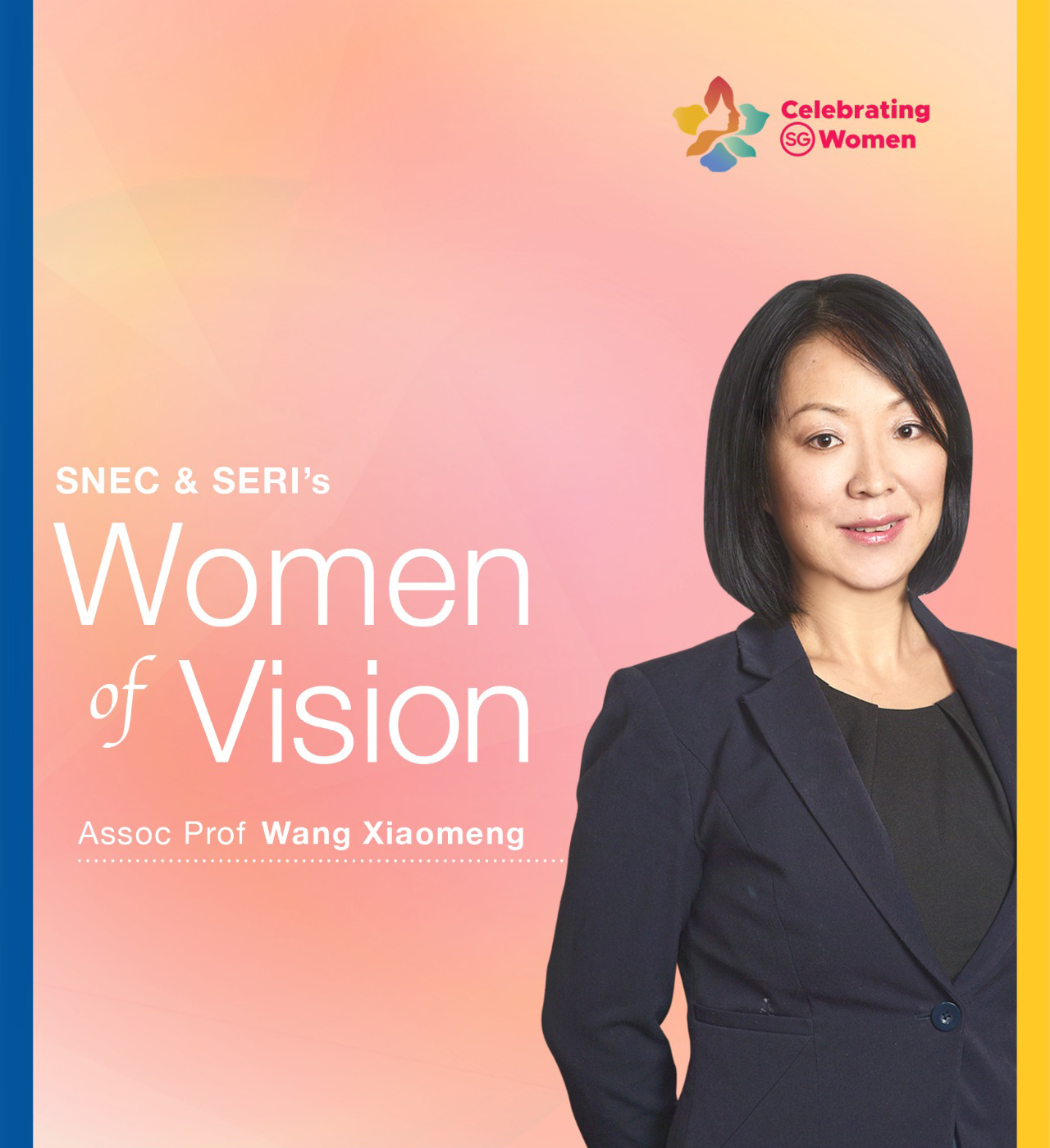Women of Vision
Celebrating SG Women
In the Year of Celebrating SG Women, we present stories which showcase and celebrate women’s multi-faceted contributions and progress at SNEC and SERI.
Join us to honour and acknowledge our team of amazing women who have made impact in the field of Ophthalmology, inspiring those around them with their brand of ethos in life.

Assoc Prof Wang Xiaomeng
Principal Investigator, Centre for Vison Research, Duke-NUS & SERI
What excites you, about your job?
My job focuses on exploring the causes of many blinding eye diseases. It not only provides insights into the disease mechanisms, but also leads to the discovery of new drug targets and diagnosis/prognosis biomarkers. It is exciting to have the opportunity to translate basic scientific discoveries into clinical applications and improving human health.
What is the biggest achievement in your career thus far?
My previous work led to the discovery of a novel regulator of TGF-beta signalling pathway. It is called Leucine-rich alpha 2 glycoprotein 1 (LRG1). Our study showed that LRG1 is specifically required for abnormal blood vessel formation in the eye, scar tissue formation in the heart and skin following injury, and delayed wound healing in diabetic patients. Targeting LRG1 may offer an opportunity to treat all these complications. Over the last few years, we have developed and validated inhibitors targeting LRG1. The humanised LRG1 antibody, Magacizumab, is currently in a clinical trial for the treatment of neovascular age-related macular degeneration.
What needs to be done to encourage more women to work in science, technology, engineering and mathematics (STEM)?
It’s traditionally believed that men do better in STEM than women; for generations, people have been implanted with this idea since they were very young. Take my daughter, who’s in Primary 3. She came home from school one day and told me — with no prompting — that boys will do better in Math and girls will do better in English! We need to get rid of this cultural bias and emphasise that both girls and boys can do well in STEM.
Married women, especially those with young children, usually take more responsibilities at home. Several of my female colleagues quit STEM jobs after having kids. Even if they want to return to STEM jobs, it is extremely challenging for them to maintain competitiveness after being away for a few years. So family support is vital, and so are policies that are pro-family.
What message do you have for young girls and women keen to pursue a STEM career?
It is exciting and rewarding working in STEM. Be brave, embrace the challenges with enthusiasm, and work hard towards the goal.
